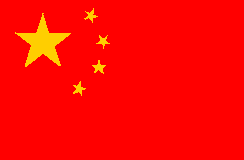China and Japan are among the world’s top three largest medical device markets – behind only the U.S. The device markets in Japan and China are valued at about $27 billion and $15 billion respectively. As both countries age rapidly, and China’s per capita income continues to grow, demand for medical devices is expected to remain strong.
Western medical devices comprise a significant portion of the high-end, high-risk market in both China and Japan. Devices that already have product registration and/or approval in the U.S., Europe, or other key device markets are often able to more easily receive approval from the Japanese and Chinese governments. Without any prior approvals, the registration hurdle for market entry in these two countries is very tough.
Selling medical device products in China and Japan can be challenging. Aside from language and culture differences, there are many unique aspects to each market that can make market entry complex to navigate. Partnering with one or more reliable, well connected distributors who you have a strong relationship with is the key to successfully marketing your medical devices in these two markets. Remember that business in Asia is done via relationships, not lawsuits.
China
There are more than 12,000 medical device distributors in China; however, finding a trustworthy and competent partner to market your products can be difficult. A good Chinese distributor in one province or region may not have any contacts or market presence in another region. Because many Chinese distributors operate on a provincial basis, Western medical device companies often partner with multiple Chinese distributors in order to obtain national coverage.
 In late 2012 Aerocrine (Sweden) announced a deal with Shanghai Pharmaceuticals for Aerocrine’s asthma diagnosis and monitoring device and kit. The agreement gives Shanghai Pharmaceuticals exclusive import rights and non-exclusive distribution rights. Similarly, in August 2014, Miraculins (Canada) announced that it had finalized agreements with Catalyn Medical Technologies (Hong Kong) and Cachet Pharmaceutical (Beijing) for Miraculins’ non-invasive diabetes screening devices. Catalyn will import and distribute the devices in Hong Kong, while Cachet will be the distributor for mainland China. Medigus (Israel) announced an exclusive distribution agreement with Sinopharm (Shanghai) in March 2013 for Medigus’ minimally invasive endoscopic system to treat gastroesophageal disease.
In late 2012 Aerocrine (Sweden) announced a deal with Shanghai Pharmaceuticals for Aerocrine’s asthma diagnosis and monitoring device and kit. The agreement gives Shanghai Pharmaceuticals exclusive import rights and non-exclusive distribution rights. Similarly, in August 2014, Miraculins (Canada) announced that it had finalized agreements with Catalyn Medical Technologies (Hong Kong) and Cachet Pharmaceutical (Beijing) for Miraculins’ non-invasive diabetes screening devices. Catalyn will import and distribute the devices in Hong Kong, while Cachet will be the distributor for mainland China. Medigus (Israel) announced an exclusive distribution agreement with Sinopharm (Shanghai) in March 2013 for Medigus’ minimally invasive endoscopic system to treat gastroesophageal disease.
Sinopharm is China’s largest healthcare and medical device corporation. Larger Chinese distributors generally have more in-house resources than smaller distributors. Thus, they are more likely to assist the device company with product registration and approval, in addition to other support services. For instance, in August 2013, Allium (Israel) announced an eight year strategic distribution agreement with King Health (Beijing) for Allium’s urological stents. As part of the agreement, King Health will pay the costs involved with obtaining regulatory approval for the devices in China. In addition to marketing the stents, King Health will hold training workshops for doctors to familiarize Chinese physicians with Allium’s products.
Japan
Finding the right medical device distributor in Japan can take quite a long time. Japanese distributors often want to have many meetings to build up a relationship with your firm and will also want to understand all the details of your product and company, prior to signing a distribution agreement.
 In choosing a Japanese medical device distributor, you should be careful to select a company that has specific sales expertise in your product area. For example, in June 2013, Mauna Kea Technologies (France) signed an exclusive, five year distribution agreement with AMCO (Tokyo) to market Mauna Kea’s probe-based Confocal Laser Endomicroscopy (pCLE) system for cancer diagnosis. AMCO specializes in gastroenterology, urology, and pulmonology, which are the main indications for the pCLE system.
In choosing a Japanese medical device distributor, you should be careful to select a company that has specific sales expertise in your product area. For example, in June 2013, Mauna Kea Technologies (France) signed an exclusive, five year distribution agreement with AMCO (Tokyo) to market Mauna Kea’s probe-based Confocal Laser Endomicroscopy (pCLE) system for cancer diagnosis. AMCO specializes in gastroenterology, urology, and pulmonology, which are the main indications for the pCLE system.
Another critical issue is to choose a Japanese medical device distributor that has excellent connections with key opinion leaders and key purchasers, such as hospitals that specialize in your product area. In October 2014, Novadaq Technologies (Canada) and Mizuho Medical (Tokyo) announced an exclusive five year distributor agreement for Novadaq’s endoscopic fluorescence imaging system. Mizuho has strong relationships with Japanese hospitals as well as key surgeons, and supplies products to 70 percent of all operating rooms in Japan.
It is also important to choose a Japanese medical device distributor that has significant market presence. For instance, Itamar Medical (Israel) signed a three year exclusive strategic marketing and distribution agreement with Nihon Kohden (Tokyo) in June 2014 for Itamar’s non-invasive endothelial function assessment device. Nihon Kohden is a leading Japanese device distributor, with 120 offices throughout Japan. Besides providing in-house product registration assistance, a large Japanese distributor can assist with a variety of services to help sell your product. For example, Brainsway (Israel) partnered with Century Medical (Tokyo) to market and distribute Brainsway’s transcranial magnetic simulation (TMS) system for the treatment of depression. The exclusive ten year agreement, announced in September 2013, also calls for Century Medical to provide installation, training and maintenance of the TMS system in Japanese medical facilities.
Some smaller Western medical companies looking for a medical device distributor in Japan may piggyback off a larger device company’s sales and marketing team. OrthAlign (Aliso Viejo, CA) signed an exclusive distribution agreement with Biomet Japan (Tokyo/Indiana) for OrthAlign’s knee arthroplasty device. The agreement was announced in February 2014, several months after OrthAlign received approval for its device from the Japanese government.
Conclusion
Over the past ten years, more and more Western medical device companies have entered the lucrative Chinese and Japanese medical device markets. One of the best ways for small and mid sized Western device firms to take advantage of these growing markets is to conclude agreements with reputable, trustworthy, and well connected medical device distributors located in Japan and China.





